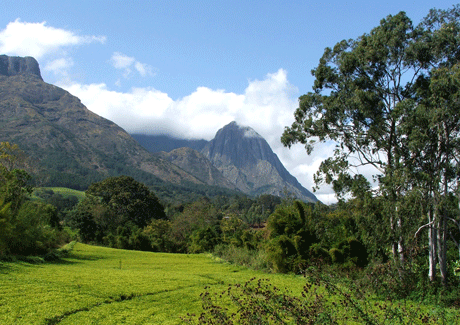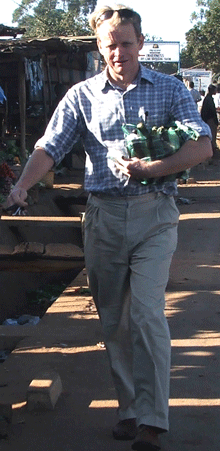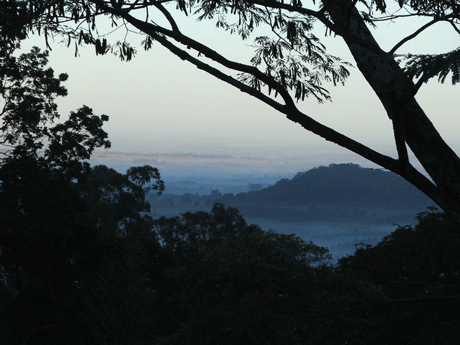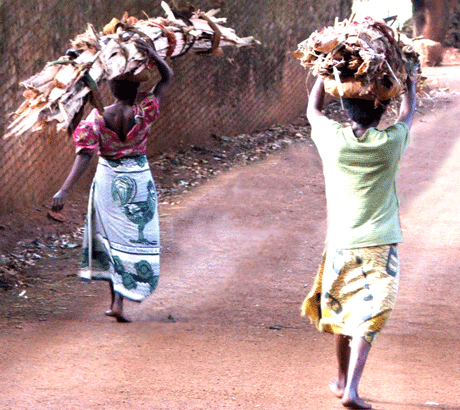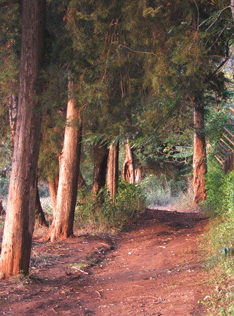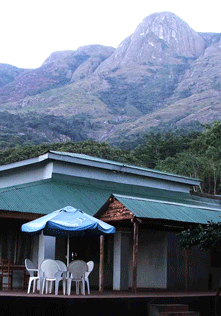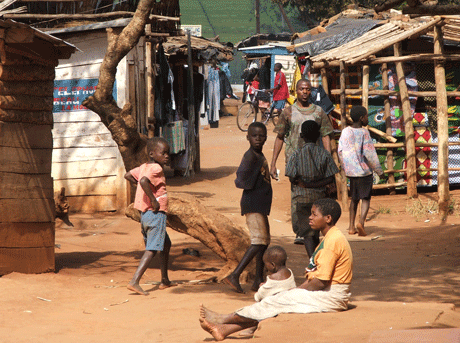 |
|
Mulanje is a modest town at the bottom of the mountain. The one paved road is lined with shops selling groceries and stationery supplies, a few tea houses and restaurants, a Christian mission, a market with great bunches of bananas and piles of pineapples, used clothing hanging from racks and piled in heaps on tarps spread over the ground. The tea estates line the roads at the bottom of the mountain, waist-high bushes in a dense, vibrant green, with women walking among them tending and pruning. Carlís house was once the residence of a tea plantation owner, and it is a gracious shady structure surrounded by lawns and lush trees.
The Trust office, on the other hand, is a more modern and modest structure, a rectangular brick building with corrugated tin roof at the end of a hard packed dirt road. Carl is South African by |
|
nationality, but he has lived most of his life in Malawi, working on an array of donor projects related to the environment. He has been with the Trust for three years, hired through a World Bank project. The Trust seems to have about a dozen Malawian staff, including professionals, office staff, and the usual array of drivers and ďboysĒ to wash the cars and keep the yard clean. In addition it has a lot of other folks around; besides me, thereís an Australian masterís student in conservation biology who lives in Vancouver and studies in England, two Dutch students of tourism on six-month placements, a Canadian student of international development on a one-year placement, a British girl here for a summer placement, another British girl here for her gap year (as they call time off between college and university), and no doubt an array of other foreigners whom I havenít met yet. The Australian is studying nocturnal mammals, so he seems to be in a somewhat confused state, hiking up to the mountain for extended periods, working at night and sleeping in the day, and getting rather muddled when comes back to diurnal life in town. Heís hoping heís found a new species, though, so it would all be worth it. The students all live together in a house up the hill. It sounds like theyíre having fun together, though they said it was |
